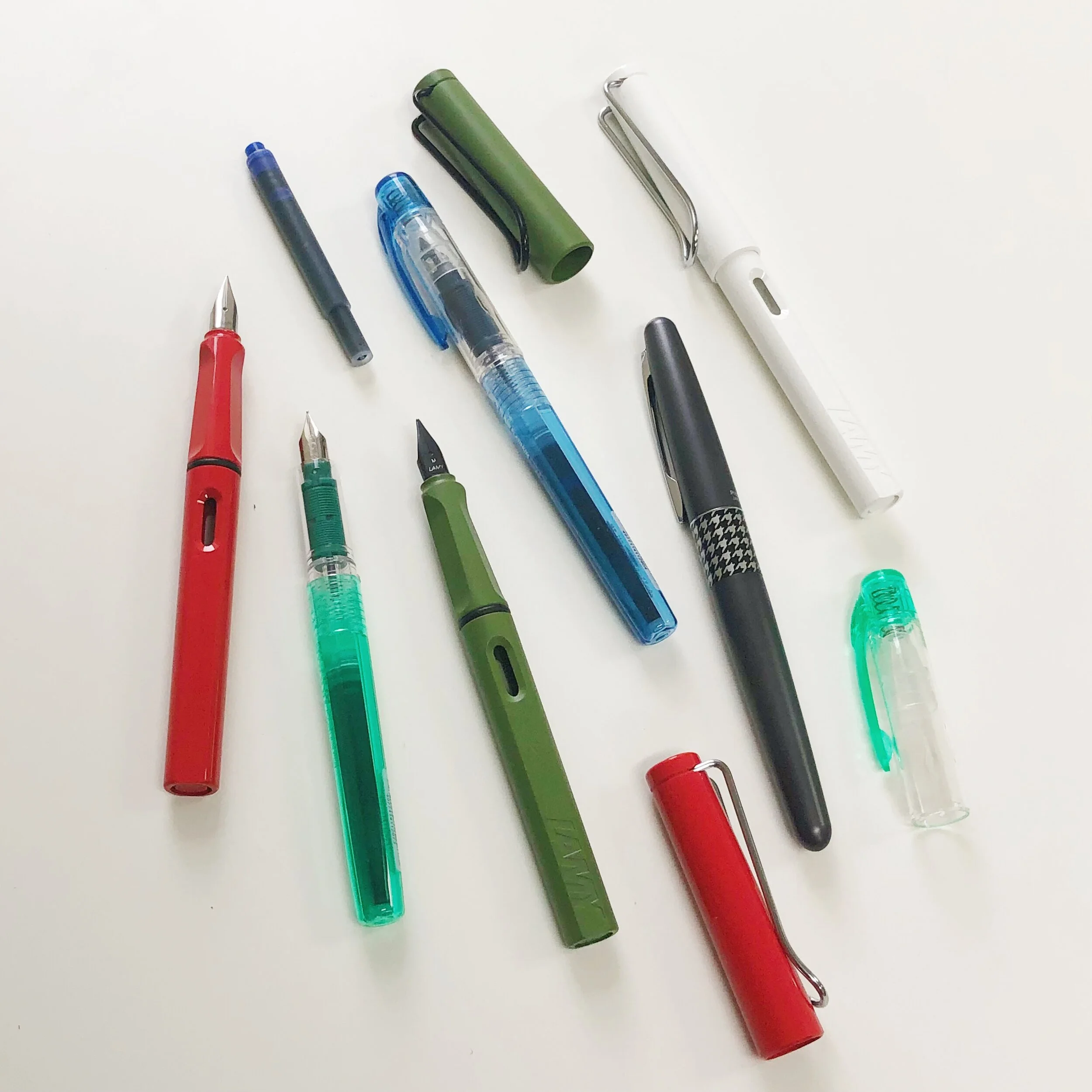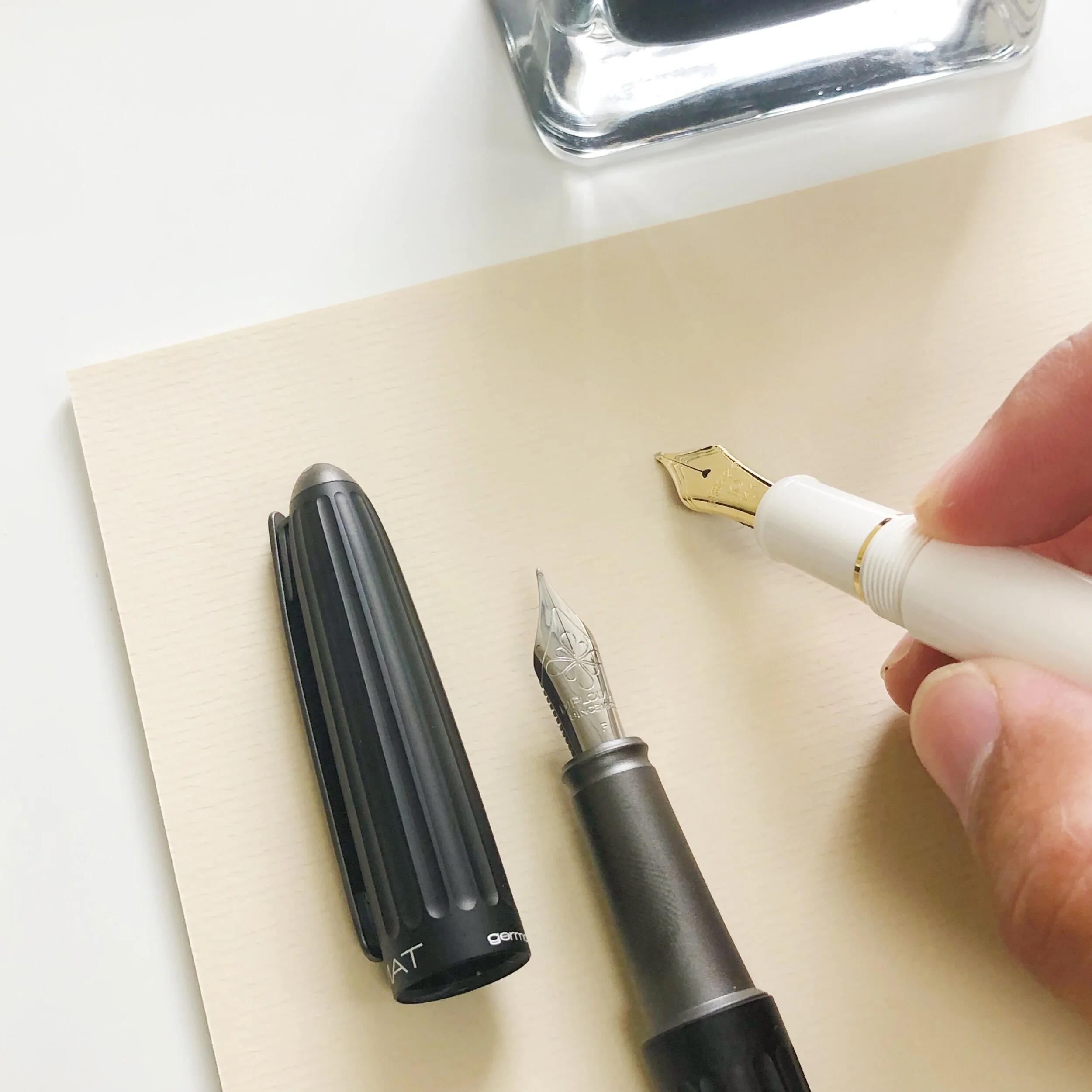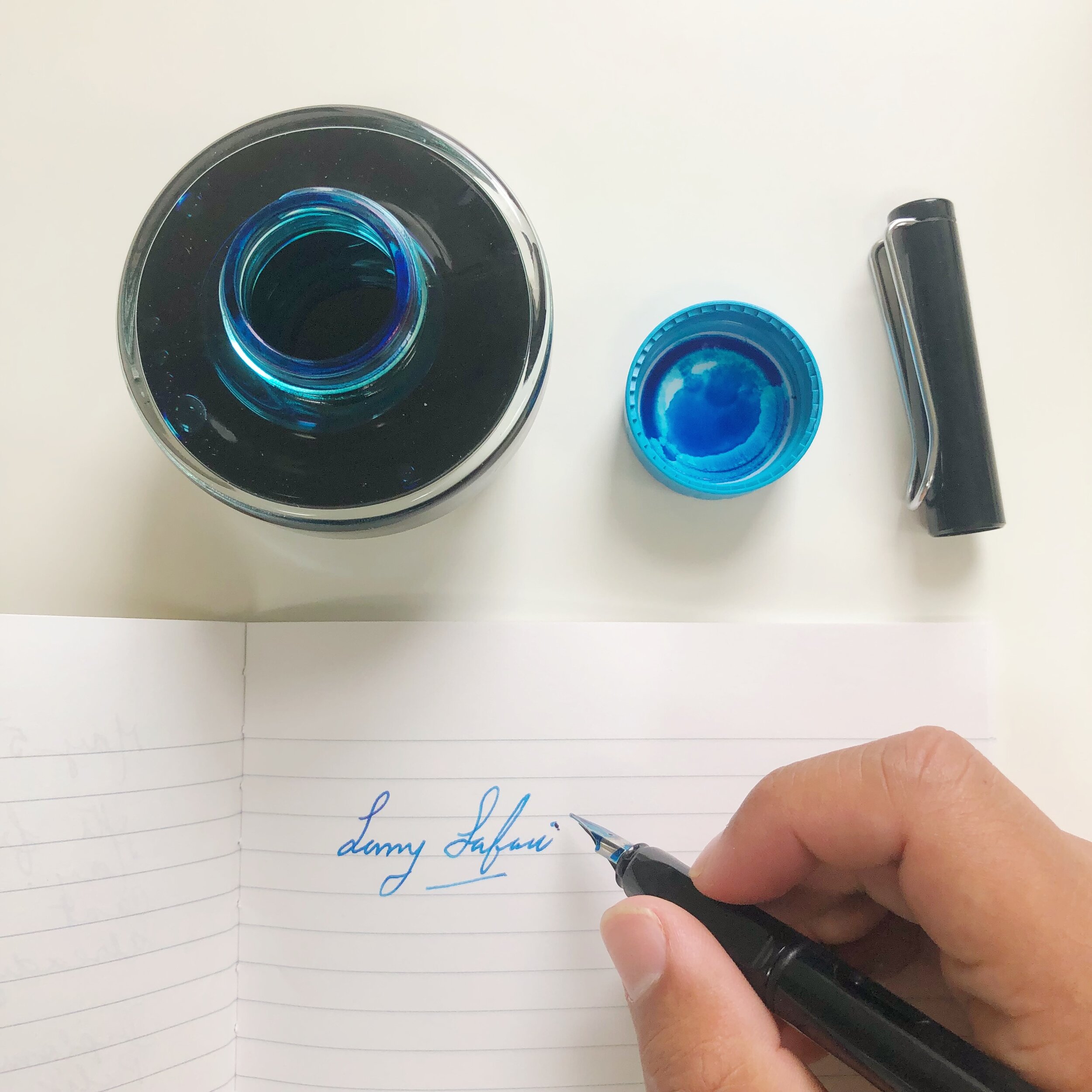Top 5 Fountain Pen Myths Debunked
If you are just at the beginning of your fountain pen journey, or only feeling a little bit curious about fountain pens, you might feel a bit intimidated by all the myths and misconceptions you have come across over the years. Not to fear, we’re here to dispel some of the most common fountain pen myths today so that you can take a fearless deep dive into the wonderful world of fountain pens.
The LAMY Safari, PLATINUM Preppy, and PILOT Metropolitan fountain pens are all very popular beginner fountain pens at our shop, and they’re all under $50.
Fountain Pens Are Expensive.
Many fountain pens, especially limited editions made with special materials or techniques, can indeed command sky high prices, especially amongst the collector’s market. But there are also a plethora of options for fountain pens that are under $50, and even a few under $20. Now you might wonder: are these inexpensive pens any good? We’re happy to confirm that all of our favourite “entry-level fountain pens” are extremely reliable writers. From the classic LAMY Safari fountain pen to the adorable PILOT Kakuno, these pens offer an affordable and easy introduction to the comfort of fountain pen writing. You can even get a super budget friendly PLATINUM Preppy fountain pen for less than $10 if you’re not yet ready to make a huge investment into this fun hobby.A Heavyweight Pen Is The Sign Of A Good Writing Instrument.
Another common myth, especially among newbies to fine writing, is that a good quality writing instrument should feel heavy. In fact, for most people, the opposite is true. A heavier writing instrument can lead to earlier fatigue as it requires a much tighter grip on the pen. For many, a lightweight fountain pen will actually be a more comfortable writing instrument and allow for a much improved writing experience.
The SAILOR 1911 (left) and PILOT Metropolitan fountain pens differ greatly in weight, but are still both very high quality pens regardless of the material from which they are constructed.
The weight of a pen is simply a matter of material preference, rather than a sign of quality or lack thereof. The PILOT Metropolitan fountain pen is an excellent pen made of brass, and is a popular choice with both beginners and longtime users of fountain pens. It is one of the few options in the entry-level segment of the market with a little bit more weight, but does not sacrifice writing comfort thanks to its wonderfully smooth nib. On the other hand, one of our most favoured mid-to-high end pens are the 1911 series and Professional Gear series pens by SAILOR. SAILOR makes almost all their pens exclusively out of lightweight resin, which, when combined with their delightful gold nibs, make writing almost effortless. So, in conclusion, great fountain pens can be found at both ends of the weight spectrum.
You can do calligraphy with some fountain pens, like the PILOT Parallel Pen shown here, but fountain pens are not for the exclusive use of calligraphy work.
3. A Fountain Pen Is Only For Writing “Fancy Letters” (Or Calligraphy).
Not at all! The majority of the fountain pen users we know actually use their pens for simple, everyday writing. From mundane grocery lists and quick meeting notes to travel sketches and personal journal entries, fountain pens can be used for all sorts of writing and drawing purposes. Calligraphy, on the other hand, is a much more formal artistic form requiring the use of specialty nibs. While some fountain pens can be fitted with nibs suitable for calligraphy (ie: the 1.9mm nib on a LAMY Safari fountain pen), and some are even designed especially for use by calligraphers (ie: the PILOT Parallel fountain pens), fountain pens, by and large, are not designed for the exclusive use of completing fancy calligraphy pieces.
The stainless steel nib on a DIPLOMAT Aero fountain pen and the gold nib on a PLATINUM #3776 Century fountain pen both offer a delightful writing experience loved by many.
4. Stainless Steel Nibs Are Inferior To Gold Nibs.
A lot of people will argue that gold nibs offer the best writing experience, leading to the belief that stainless steel nibs are inferior in quality and writing comfort. Actually, we believe that gold nibs simply offer a different writing experience, and that you can in fact get a fantastic writing experience even with a stainless steel nib. We love the experience of writing with our DIPLOMAT Aero and FABER CASTELL e-motion fountain pens just as much as we love our PLATINUM #3776 Century and our PELIKAN M600. Where steel and gold nibs differ the most is the feedback they offer as the pen makes contact with paper and moves across the page. Because gold is softer material, we find that it does respond differently, and more readily, to minute changes in pressure as you write. The reality is that while you will find a range of writing experiences across both steel and gold nibs, some offering more feedback and others offering buttery smoothness, the material of the nib doesn’t automatically dictate whether it will be enjoyable or not. If anything, the experience you can expect to get will depend more on the signature characteristic of a brand (and how they choose to tune a nib) rather than simply the material itself.
5. Fountain Pens Are Difficult To Use And Requires Lots Of Maintenance.
Gone are the days when using a fountain pen meant ink covered fingers and finicky sac replacements. Modern fountain pens are easy to use and require relatively little maintenance. Even learning to write with one doesn’t require anything more than a few minutes. All you need to remember is that it requires minimal pressure (don’t press down too hard) and that the nib should face up towards you. Maintenance wise, so long as you remember to only use fountain pen ink in your pen (as opposed to drawing ink, calligraphy ink or India ink), your pens won’t require anything more than an occasional quick flush with cool or lukewarm water. We recommend giving your pens a quick flush every 6-8 weeks, just to ensure there’s no build up of dried up ink particles.
For beginners, learning to write with a fountain pens take hardly any time, no matter their age. In fact, something like a LAMY Safari will even help to reinforce good writing technique thanks to its triangular grip section.
Do you have a question about fountain pens? If you are trying to figure out what your first fountain pen should be, or you need some troubleshooting with your new fountain pen, send us an email! We’re always happy to answer your questions.
What other fountain pen myths have you read recently? Let us know in the comments below!





